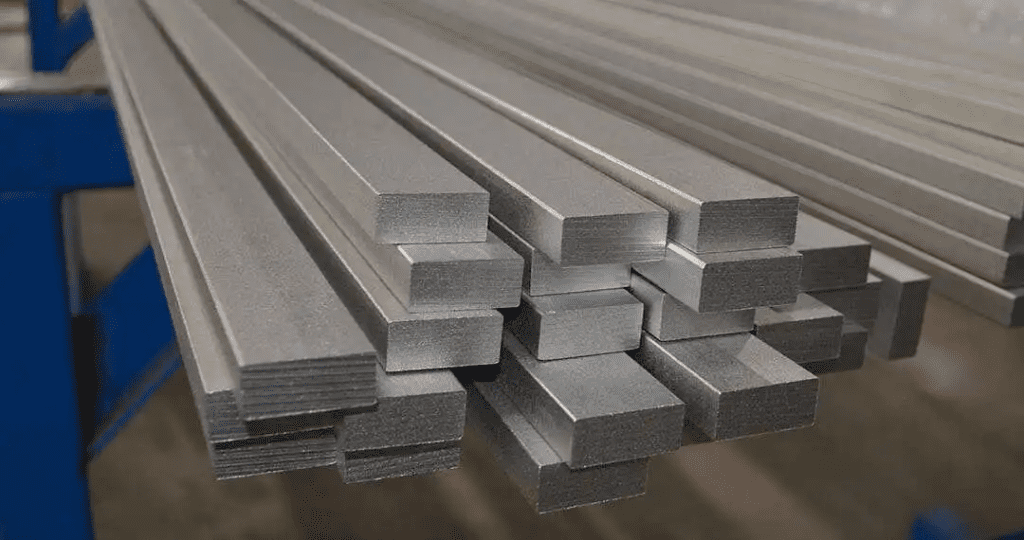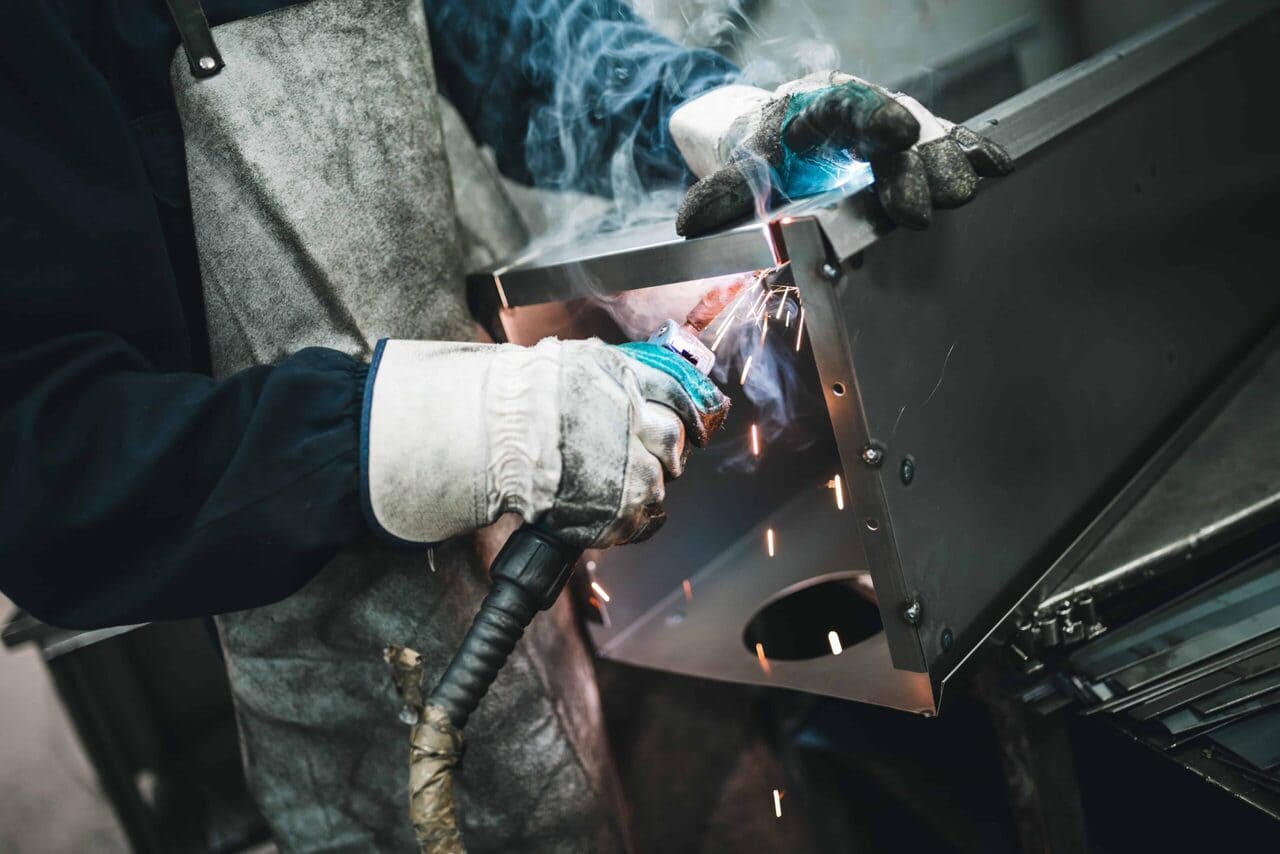Metalworking is complex, as there is a vast range of materials with unique properties that make each metal useful for different applications. This includes steel, iron, and various ferrous alloys.
As many fabricators and machinists progress in the metallurgical industry, they often encounter confusing metallurgical terminology that can require years of experience working in the field to learn.
Below, we give you brief descriptions of some of the most frequently used and important metallurgical terminology to help you create a solid knowledge base.
A Glossary of Frequently Used Metallurgical Terminology
Covering the entire metallurgical terminology would be beyond the scope of this article; however, we have compiled the following list of important terms to help you get started.
Abrasion
Abrasion refers to the wear down of a metal surface under stress or external impact, which can be protected using abrasion-resistant coatings.
However, it can be intentionally imposed using abrasives to rub and shape another workpiece in some applications. Abrasives are commonly found in grinding wheels and polishing compounds.
Annealing
Annealing is a heat treatment process under which the internal crystal structure of metals, such as aluminum, copper, and brass, changes to reduce hardness and increase ductility.
This heat treatment is also performed to save metals from turning brittle after a hardening process and to improve their machinability.
Brittleness
Brittleness is the ability of a metal to develop fractures without undergoing any change in size or shape when subjected to an external force. A material is brittle if there is little elastic deformation and no significant plastic deformation before fracture.
Cold Cracking
Cold cracking refers to a welding failure. While welding high-strength alloys, hydrogen gets trapped inside welded material, slowly diffuses to the Heat-Affected Zone (HAZ), and develops cracks. This is also referred to as hydrogen cracking.
One of the best ways to avoid cold cracking is to sufficiently preheat the metal to delay the cooling time.
Cold Working
Cold working, also known as work hardening, is the process of altering the shape and size of a non-brittle metal at room temperature. The methods used are rolling, pressing, drawing, and spinning metal to enhance its strength. For instance, cold rolling of steel improves its tensile strength and mechanical properties.
On the other hand, when metals are shaped at their melting point through hot rolling, forging, or welding, the process is called hot working.
Conductivity
The conductivity of metals represents their ability to transmit heat, electricity, or sound (vibration). The rate of conductivity decreases with the presence of impurities, which explains why pure metals are better conductors than alloys.
Convection
The ability of fluid particles (liquid and gas) to travel from a hot area to a cold area, thereby causing heat transfer, is known as convection. A pipe carrying fluids will experience convection between fluid particles and in its internal surface depending on the fluid’s velocity and the diameter of the pipe.
Decarbonization
Decarbonization is the process of reducing the carbon content in an alloy and lowering CO2 emissions during the production process by using efficient programs and strategies.
|
Buy Certified High-Quality Metals for Industrial Solutions |
||
|
New Aluminum |
New Steel |
New Stainless Steel |
 |
 |
 |
| Reliable supply: Consistent, certified aluminum stock you can trust. High-quality material: Superior-grade aluminum for precision needs. Custom cuts: Accurate cuts down to thousandths of an inch. |
Durability and strength: Reliable for projects needing long-lasting, tough materials. Cost-effective: Quality steel that offers strength without breaking the bank. Custom cutting: Precise cuts tailored to exact needs with top-tier cutting tools. |
Sustainability: Highly eco-friendly as the most recyclable metal on earth. High durability: Resistant to corrosion and wear, ensuring long-lasting performance. Custom precision cuts: Tailored to your specifications with quick, accurate results. |
Ductility
Ductility is one of the main physical properties of metal to receive permanent deformation (plastic deformation) without fracture.
This characteristic is essential in ferrous alloys that can undergo plastic deformation during cold working without fracturing.
Differential Heat Treatment
As the name suggests, it is a heat treatment method to add different degrees of toughness (martensite) to a metal object and is often used for making swords, blades, and knives.
The process involves quickly heating the targeted area, followed by a rapid quenching (cooling) for turning it into martensite. It can be applied to a few parts or the whole body of an object, depending on the requirement.
Elasticity
Elasticity refers to the reversible physical properties of metals to return to their original state after being subjected to external stress or strain under permissible limits, known as their
Young’s modulus of elasticity. When the surface area of metals undergo elongation beyond the limit, it develops cracks, crevices, and corrosion.
Embrittlement
Embrittlement is a phenomenon that refers to a metal’s transformation from a ductile to a brittle phase. Embrittlement is more common in steel and can be triggered by cold working, aging, and hydrogen absorption.
Fatigue
Fatigue refers to the phenomenon of the periodic development of cracks in a metal due to cyclic loading, followed by its complete fracture at low stress.
Hardness
Hardness is used to assess the metallic properties to resist deformation by either concentrated applied loads or abrasion. Therefore, it ultimately refers to its tensile strength.
Intergranular Corrosion
Intergranular corrosion occurs in the vicinity of grain boundaries rather than inside.
When certain alloys, like steel, are exposed to a specific heat treatment known as a sensitizing temperature, precipitation of one of the alloy elements occurs, leading to a localized attack on grain boundaries. It may also occur due to the presence of impurities at the grain boundaries.
Therefore, it is often advised to use high-grade alloys with good resistance to intergranular corrosion.
Malleability
Malleability refers to the ability of metallic elements to be compressed into thin sheets. Though it closely resembles ductility, they are not the same. Malleability involves compressive strength, whereas ductility refers to the tensile strength of a metal.
Necking
Necking is localized corrosion of ductile metals that gives them a “V” shape as a result of strain concentrated in a small region of the material.
Oxidation
Some metals, like pure iron, have an affinity to form bonds with free air oxygen. This is known as oxidation, and the reaction is responsible for rusting or corrosion. It also occurs through the transfer of ions between two different metals placed in contact inside a conducive environment, such as in water.
Pitting
Pitting is a type of corrosion over a metal surface that takes the form of a cavity or hole without affecting adjacent structures. It mainly occurs due to any chemical or physical attack on the protective layer over the material.
Sag
When a horizontal metal beam on two vertical supports bends downward in response to any external pressure from opposite directions, the downward curve is known as sagging, and the upward curve is known as hogging.
Sagging is also the tendency for a wet coating to flow downward due to gravity, causing the lower end of a metal to have a thicker edge.
Scaling
Scaling refers to the extremely hard mineral deposits inside the piping and boiler system that, if untreated, may interfere with heat transfers and cause hot spots.
Strength
The strength of metal can fall into three categories-
- Tensile Strength: The maximum pulling/stretching a metal can handle until it breaks
- Impact Strength: The maximum sudden collision energy a metal can absorb before cracking
- Compressive Strength: The ability to withstand max compressive force without damage
For example, plain carbon steel and cast iron exhibit significant compressive strength, while tensile strength is crucial in applications involving ferrous alloys.
Strength-to-Weight ratio
This is a ratio between tensile strength and metal density under gravity. It is extremely useful in the manufacturing industry for choosing ideal metals that can display high strength with as little mass as possible.
The higher the ratio, the better. That’s why metals like aluminum and titanium are highly preferred over steel in the aerospace industry.
Tolerance
It refers to the maximum or minimum variation of thickness of the material from its specified dimension. For instance, a metal sheet of a three-inch dimension with a tolerance of ± .02 inches indicates the thickness will vary between 2.98 inches to 3.02 inches.
The Bay Area’s Trusted Metal Sales and Recycling Company
Industrial Metal Service is a single-stop-destination for purchasing and recycling metal and metal remnants. We supply a wide range of ferrous and non-ferrous metals and can cut metal to the required dimensions with our in-house metal sawing services.
We also supply rare and exotic special metals like Invar, Molybdenum, and Inconel.
Our recycling services enable industries to turn their scrap into profits. To maximize your convenience, we can customize a pickup schedule and offer easy transportability options with roll-off services.
We use Thermo-Fisher XRF analyzers to verify and identify high-grade metal remnants to fit the standards you require.
 Angle
Angle Cast Plate
Cast Plate Diamond Plate
Diamond Plate Flat Bar
Flat Bar Plate
Plate Round Bar
Round Bar Square Bar
Square Bar Square Tubing
Square Tubing Round Tubing
Round Tubing Angle
Angle Channel
Channel Diamond Plate
Diamond Plate I Beam
I Beam Round Bar
Round Bar Sheet
Sheet Square tubing
Square tubing Round Tubing
Round Tubing Rectangular Tubing
Rectangular Tubing Plate
Plate Rectangular Bar
Rectangular Bar Rectangular Tubing
Rectangular Tubing Round Bar
Round Bar Sheet
Sheet Square Bar
Square Bar Square Tubing
Square Tubing
